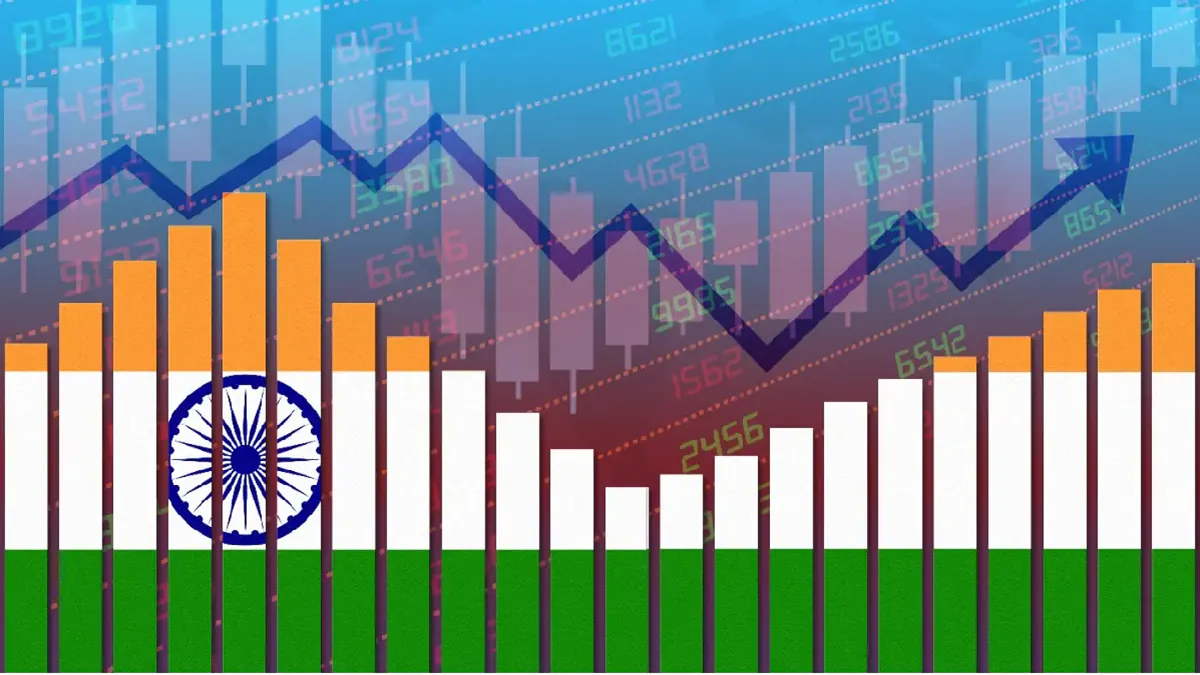India’s economic growth is anticipated to range between 6.3% and 6.8% in the upcoming fiscal year starting April 1, 2025, as detailed in the annual Economic Survey presented to Parliament by Finance Minister Nirmala Sitharaman. This projection follows an expected growth rate of 6.4% for the current fiscal year, marking the slowest expansion in four years, down from 8.2% in the previous year.
Key Drivers of Growth
The Economic Survey, authored by Chief Economic Adviser V. Anantha Nageswaran and his team, identifies several factors contributing to the projected growth:
- Rural Demand: A rebound in agricultural production is expected to stimulate rural consumption, providing an upside to near-term growth.
- Stable Macroeconomic Environment: The survey emphasizes the importance of maintaining a stable macroeconomic environment to foster economic expansion.
- Policy Measures: Anticipated policy initiatives aimed at strengthening consumption and encouraging local manufacturing are seen as potential catalysts for growth.
Challenges and Risks
Despite the optimistic outlook, the survey highlights several challenges that could impede economic progress:
- Geopolitical and Trade Uncertainties: Ongoing global geopolitical tensions and trade uncertainties pose significant risks to India’s economic prospects.
- Commodity Price Shocks: Potential shocks in commodity prices could adversely affect the economy, particularly in sectors dependent on imports.
- High Public Debt: India’s high public debt levels remain a concern, potentially limiting the government’s ability to implement fiscal measures to stimulate growth.
Fiscal Policy and Budgetary Measures
In the recent budget, the government has taken steps to address some of these challenges:
- Income Tax Reforms: Significant income tax cuts have been introduced to boost the spending power of the middle class. The income tax starting threshold has been raised from $8,074 to $14,800, aiming to increase savings and consumption among middle-income earners.
- Agricultural Initiatives: A high-yield crop program targeting 17 million farmers has been launched to enhance agricultural productivity and support rural incomes.
- Infrastructure Investment: Despite concerns over reduced capital spending, the budget allocates funds for infrastructure development, which is crucial for long-term economic growth.
Monetary Policy and Inflation
The Reserve Bank of India (RBI) continues to monitor inflation trends closely. While core inflation remains below the central bank’s target, there is a noted upward trend that could potentially dampen consumer spending if not addressed. The RBI’s monetary policy will play a critical role in managing inflationary expectations and supporting economic growth.
Foreign Direct Investment (FDI) and Trade
The Economic Survey reports a revival in Foreign Direct Investment, with inflows reaching $55.6 billion in the current fiscal year. This resurgence is seen as a positive indicator of global investor confidence in India’s economic prospects. The government is also focusing on enhancing trade relations and exploring new markets to boost exports.
Labor Market and Employment
The survey underscores the need for labor market reforms to enhance productivity and employment. It suggests that strict work-hour regulations may hinder economic growth and reduce workers’ earning potential. The government is encouraged to consider more flexible labor laws to attract investment and improve job creation.
Long-Term Economic Strategy
Looking ahead, the government aims to implement structural reforms to sustain long-term economic growth. Key areas of focus include:
- Digital Economy: Leveraging technology to enhance efficiency and productivity across sectors.
- Sustainable Development: Emphasizing environmentally sustainable practices to ensure long-term economic viability.
- Education and Skill Development: Investing in education and skill development to prepare the workforce for future challenges.
Conclusion
While India’s economy faces several challenges, the projected growth rate of 6.3% to 6.8% for the fiscal year 2025/26 reflects a cautiously optimistic outlook. The government’s policy measures, coupled with a stable macroeconomic environment, are expected to support this growth trajectory. However, addressing structural issues such as high public debt, labor market rigidity, and geopolitical uncertainties will be crucial to achieving and sustaining higher growth rates in the future.
Ready to take your career to the next level? Join our dynamic courses: ACCA, HESI A2, ATI TEAS 7 , HESI EXIT , NCLEX – RN and NCLEX – PN, Financial Literacy!🌟 Dive into a world of opportunities and empower yourself for success. Explore more at Serrari Ed and start your exciting journey today! ✨
photo source: Google
By: Montel Kamau
Serrari Financial Analyst
31st January, 2025
Article, Financial and News Disclaimer
The Value of a Financial Advisor
While this article offers valuable insights, it is essential to recognize that personal finance can be highly complex and unique to each individual. A financial advisor provides professional expertise and personalized guidance to help you make well-informed decisions tailored to your specific circumstances and goals.
Beyond offering knowledge, a financial advisor serves as a trusted partner to help you stay disciplined, avoid common pitfalls, and remain focused on your long-term objectives. Their perspective and experience can complement your own efforts, enhancing your financial well-being and ensuring a more confident approach to managing your finances.
Disclaimer: This article is for informational purposes only and does not constitute financial advice. Readers are encouraged to consult a licensed financial advisor to obtain guidance specific to their financial situation.
Article and News Disclaimer
The information provided on www.serrarigroup.com is for general informational purposes only. While we strive to keep the information up to date and accurate, we make no representations or warranties of any kind, express or implied, about the completeness, accuracy, reliability, suitability, or availability with respect to the website or the information, products, services, or related graphics contained on the website for any purpose. Any reliance you place on such information is therefore strictly at your own risk.
www.serrarigroup.com is not responsible for any errors or omissions, or for the results obtained from the use of this information. All information on the website is provided on an as-is basis, with no guarantee of completeness, accuracy, timeliness, or of the results obtained from the use of this information, and without warranty of any kind, express or implied, including but not limited to warranties of performance, merchantability, and fitness for a particular purpose.
In no event will www.serrarigroup.com be liable to you or anyone else for any decision made or action taken in reliance on the information provided on the website or for any consequential, special, or similar damages, even if advised of the possibility of such damages.
The articles, news, and information presented on www.serrarigroup.com reflect the opinions of the respective authors and contributors and do not necessarily represent the views of the website or its management. Any views or opinions expressed are solely those of the individual authors and do not represent the website's views or opinions as a whole.
The content on www.serrarigroup.com may include links to external websites, which are provided for convenience and informational purposes only. We have no control over the nature, content, and availability of those sites. The inclusion of any links does not necessarily imply a recommendation or endorsement of the views expressed within them.
Every effort is made to keep the website up and running smoothly. However, www.serrarigroup.com takes no responsibility for, and will not be liable for, the website being temporarily unavailable due to technical issues beyond our control.
Please note that laws, regulations, and information can change rapidly, and we advise you to conduct further research and seek professional advice when necessary.
By using www.serrarigroup.com, you agree to this disclaimer and its terms. If you do not agree with this disclaimer, please do not use the website.
www.serrarigroup.com, reserves the right to update, modify, or remove any part of this disclaimer without prior notice. It is your responsibility to review this disclaimer periodically for changes.
Serrari Group 2025












